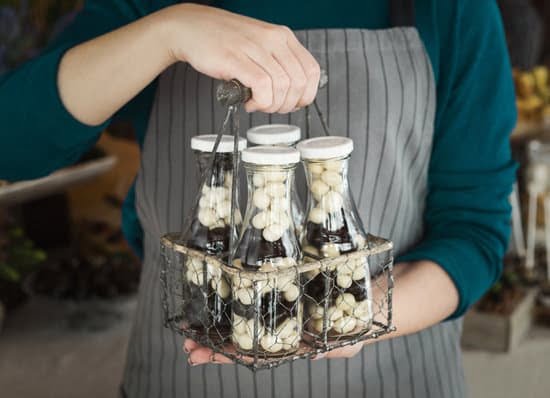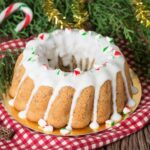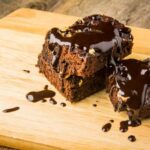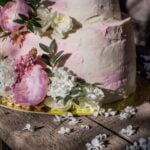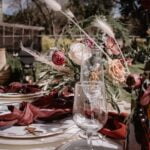Do you want to create a cake that captures the natural beauty of tree bark? Look no further. In this blog post, we will guide you through the step-by-step process of decorating a cake like tree bark. By following our detailed instructions, you can create a stunning cake design that replicates the texture and colors of real tree bark.
Imagine your friends and family’s amazement when they see your incredibly realistic tree bark cake. Whether you’re planning a woodland-themed party or simply want to showcase your creativity, this unique cake design is sure to impress. We’ll provide all the tips and tricks you need to achieve a jaw-dropping result.
Throughout this article, we’ll cover everything from gathering the necessary tools and ingredients, preparing the cake base, creating a textured bark base using frosting or fondant, coloring the bark with food coloring or edible dust, adding realistic details like knots and cracks, incorporating edible moss and foliage for an authentic touch, and adding finishing touches to make your cake truly shine.
Plus, we’ll even share additional tips and tricks to overcome common challenges encountered when decorating a cake like tree bark.
So let’s get started on this exciting journey of turning a plain cake into a masterpiece that resembles nature’s most exquisite creation – tree bark. Get ready to wow your guests with your creativity and skill in creating an absolutely stunning cake.
Gathering the Necessary Tools and Ingredients
Tools
To successfully decorate a cake like tree bark, you will need a few essential tools. These include:
- Offset spatula: This will be your go-to tool for spreading and smoothing frosting on the cake.
- Piping bags and tips: Use these to create realistic textures and details on the tree bark.
- Paintbrushes: You’ll need brushes of various sizes for applying edible paint or dust to enhance the texture and color of the bark.
- Sculpting tools: These are useful for creating knots, cracks, and other natural markings in the bark.
- Rolling pin: If using fondant, a rolling pin will help you achieve an even thickness when covering the cake.
Ingredients
The ingredients required for decorating your cake like tree bark will depend on personal preference. However, here are some common ones to consider:
- Cake mix or homemade batter: Choose a flavor that complements your desired tree bark design, such as chocolate or vanilla.
- Frosting: Opt for a buttercream frosting to create realistic texture, or use fondant if you prefer a smoother finish.
- Food coloring: Depending on the type of tree bark you want to mimic, you may need different shades of brown food coloring. Consider using gel-based colors for vibrant results.
- Edible paint or dust: These can add depth and dimension to your tree bark design by giving it a more natural color variation.
- Fondant or gum paste: If you choose to cover your cake with fondant, make sure to have enough on hand for both the base layer and any additional decorations.
Suggestions for Alternatives
If you don’t have certain tools or ingredients readily available, there are alternatives you can try. For example:
- Instead of an offset spatula, you can use a butter knife or straight-edge scraper to smooth out frosting.
- If you don’t have piping bags and tips, you can use a zip-top bag with the corner cut off to achieve similar results.
- In place of traditional paintbrushes, consider using clean cosmetic brushes specifically designated for food use.
- If you prefer not to work with fondant, you can create a textured bark base with frosting alone. Use a small spatula or toothpick to create the desired texture.
Remember, everyone’s preferences and resources may vary, so feel free to adapt these suggestions based on what works best for you. The goal is to gather all the necessary tools and ingredients before starting your cake decorating journey.
Preparing the Cake Base
Preparing the Cake Base: The foundation of your tree bark cake starts with a perfectly baked and leveled cake. This step is crucial because it sets the stage for creating a smooth surface that will enhance the overall appearance of the tree bark design. Here are some tips to help you get started:
- Choosing the right cake flavor: When selecting a cake flavor for your tree bark cake, consider flavors that complement the earthiness of the bark design. Chocolate, vanilla, and spice flavors work well for this theme. You can also experiment with flavored cakes such as caramel or coffee to add depth to your creation.
- Baking techniques: To ensure an even bake, make sure to properly preheat your oven and use an oven thermometer to ensure accurate temperature readings. Follow the recipe instructions carefully and avoid overmixing the batter, as this can result in a dense or tough texture. It’s also important to use high-quality ingredients and measure them accurately.
- Leveling the cake: Leveling your cake is essential for achieving a smooth surface. Once your cake has cooled completely, use a long serrated knife or a cake leveler to trim off any domed or uneven parts. Take care to keep the knife parallel to the countertop and make slow, steady cuts. If you prefer a more rustic look, you can skip leveling and embrace any natural variations in height.
- Creating a crumb coat: Before applying frosting or fondant on your cake, it’s beneficial to apply a thin layer of frosting known as a crumb coat. This helps seal in any loose crumbs and provides a stable base for further decoration. Simply spread a thin layer of frosting all over the cake using an offset spatula or bench scraper, ensuring that no crumbs show through.
By following these tips when preparing your cake base, you’ll be one step closer to achieving a beautifully decorated tree bark cake. Taking the time to choose the right flavor, bake with precision, level properly, and apply a crumb coat will ensure a smooth and professional-looking result.
Creating a Textured Bark Base
Creating a Textured Bark Base:
One of the key elements in decorating a cake to resemble tree bark is creating a textured base layer. This is what will give your cake that realistic look and feel. There are several techniques you can use to achieve this bark-like texture, and we’ll guide you through each one.
- Frosting Technique: One popular method is using frosting to create the texture of tree bark. Start by applying a thin layer of buttercream or ganache all over the cake.
Once the base layer is set, take a small offset spatula or the back of a spoon and gently press it into the frosting, moving in various directions to imitate the rough texture of tree bark. You can also use a fork or toothpick to add more intricate lines and details. - Fondant Technique: Another option is using fondant to create a textured bark base. Roll out your fondant into a thin sheet and carefully drape it over the cake, smoothing it down to ensure it adheres properly. To create the impression of tree bark, use different tools such as silicone molds, embossing mats, or even real tree bark itself. Press these onto the fondant surface to leave behind imprints that resemble bark patterns.
- Edible Paint Technique: If you want to add depth and dimension to your textured bark base, consider using edible paint. Start by covering your cake with a smooth layer of buttercream or fondant, then mix food coloring with vodka or clear vanilla extract to create an edible paint mixture.
Use small brushes or sponges to apply different shades of brown, gray, and black onto the surface of your cake in random patterns that mimic natural tree bark.
Remember, whichever technique you choose for creating the textured bark base, be sure to experiment and practice beforehand on smaller cakes or pieces of fondant so you can perfect your skills before working on your main masterpiece.
By following these techniques, you’ll be well on your way to creating a visually stunning cake that resembles the natural beauty of tree bark. In the next section, we’ll explore different options for coloring the bark to achieve a truly realistic look.
Coloring the Bark
To achieve a realistic tree bark effect on your cake, it is essential to focus on coloring techniques. Tree bark comes in a wide range of shades and colors, and replicating this diversity is crucial for creating the desired effect. In this section, we will explore different coloring options that can help you achieve a natural-looking bark on your cake.
One of the most common and versatile coloring options for decorating a cake like tree bark is food coloring. Food coloring gels or liquid drops are readily available in various shades, allowing you to mix and match colors to create the perfect bark tone. Start by selecting a base color that closely resembles the overall tone of your chosen tree bark.
Then, use a brush or small spatula to apply thin layers of diluted food coloring onto the textured bark surface. Gradually build up the color until you achieve the desired depth and richness.
Another option for coloring your tree bark cake is cocoa powder. Cocoa powder can add an authentic brown hue while contributing a subtle chocolate flavor to the cake. Simply dusting cocoa powder over the textured surface can give your cake a natural-looking bark appearance, especially when combined with food coloring to add dimension and variation.
Edible dusts are another fantastic option for adding depth and realistic shading to your tree bark design. Edible dusts are available in various shades and can be applied using a dry brush or by mixing it with clear extract, such as vodka or lemon juice, to create paint-like consistency. Use these edible dusts to create subtle highlights and lowlights on specific areas of the textured surface, further enhancing the illusion of real tree bark.
By exploring different coloring options like food coloring, cocoa powder, and edible dusts, you can effectively replicate the natural shades and colors found in tree barks on your cake. Experiment with mixing colors and layering techniques to create subtle variations that add dimension and authenticity to your creation. With careful attention to detail in your color choices, your cake will truly resemble a piece of nature’s art.
Adding Details
Creating Knots and Cracks
One way to make your tree bark cake look more realistic is by adding knots and cracks to the design. These details help to mimic the natural imperfections found in real tree bark. To create knots, you can use small pieces of fondant or gum paste that have been shaped into rounded bumps. Attach these knots to the surface of the cake using a bit of edible glue or water.
Cracks can be made using a variety of techniques. One method is to use a toothpick or thin food-safe brush to create lines in the frosting or fondant. Another option is to roll out small, thin pieces of fondant and gently press them onto the cake, creating a cracked texture. Be sure to vary the size and direction of your cracks for a more authentic look.
Adding Natural Markings
To further enhance the realistic appearance of your tree bark cake, you can add other natural markings commonly found on tree bark. You can achieve this by using different textures and patterns on the surface of your cake.
For example, you can create rough patches by pressing a piece of crumpled parchment paper against the frosting or fondant. This will leave behind indentations that resemble rough bark texture. Another technique involves using specialty tools such as impression mats or silicone molds specifically designed for creating tree bark patterns.
Additionally, you can use food coloring pens or edible paint to draw fine lines or swirls on the cake’s surface, mimicking natural wood grain patterns. These details may seem minor, but they contribute significantly to achieving an authentic-looking tree bark design.
Using Edible Materials and Tools
When it comes to adding details to your tree bark cake, there are several edible materials and tools that can be used creatively. For knots and cracks, consider using modeling chocolate instead of fondant for a more natural texture. Modeling chocolate is pliable and can be easily shaped into knots and cracks, adding a three-dimensional element to your cake.
To enhance the appearance of the knots and cracks, you can dust these areas with edible powders or cocoa powder to create shading or highlights. This will make them stand out and add depth to the overall design.
For finer details like wood grain patterns or natural markings, edible markers or food coloring pens can be used. These allow for precise drawing and detailing, giving your cake a truly realistic finish.
Remember that practice is key when it comes to achieving the desired level of detail in your tree bark cake. Take your time experimenting with different techniques and materials until you’re satisfied with the result. With patience and creativity, you’ll be able to take your cake decoration skills to a whole new level.
Incorporating Moss and Foliage
To create moss on your tree bark cake, there are two popular methods using either buttercream or fondant.
For buttercream moss, you will need to prepare a batch of green buttercream icing. Use a small round piping tip to pipe short strokes in various directions onto the cake surface to resemble moss. Vary the lengths of the strokes and create clusters to achieve a realistic effect. Once all the moss is piped onto the cake, gently pat it down with a clean brush or spatula to soften the edges and create texture.
If you prefer working with fondant, you can create edible moss by tinting small portions of fondant with green food coloring. Roll out the tinted fondant thinly and cut into irregular shapes resembling clumps of moss. Gently press these pieces onto the textured bark base of your cake, arranging them in clusters for a natural look. You can also add additional details like tiny leaves or pebbles made from fondant to enhance the realism.
In addition to moss, incorporating edible flowers or leaves can elevate your tree bark design even further. To ensure that these decorations are food-safe, use organic flowers or leaves that have been grown without pesticides. Before placing them on the cake, thoroughly wash and dry them to remove any dirt or chemical residue.
Once your flowers or leaves are cleaned and ready, arrange them strategically on top of your cake in areas where they would naturally grow on a tree trunk. Insert them gently into the frosting or fondant to secure them in place and enhance their visual impact.
Remember that when incorporating moss and foliage into your tree bark design, less is often more. Aim for a balanced and natural appearance, using these elements sparingly to avoid overwhelming the overall look of your cake.
| Method | Description |
|---|---|
| Buttercream Moss | Piping short strokes of green buttercream icing onto the cake surface to resemble moss. |
| Fondant Moss | Tinting small portions of fondant with green food coloring, rolling it out thinly, and cutting into irregular shapes resembling clumps of moss. |
| Edible Flowers or Leaves | Selecting organic flowers or leaves, washing and drying them, and arranging them strategically on top of the cake to enhance the tree bark design. |
Finishing Touches and Presentation
Finishing Touches and Presentation:
After putting in all the hard work to create a tree bark cake, it’s time to add the finishing touches that will take your creation from beautiful to jaw-dropping. In this section, we will explore various options for adding those final touches and presenting your cake in a way that really showcases the texture and beauty of the bark.
One option for enhancing the overall appearance of your tree bark cake is to give it a glossy sheen. This can be achieved by brushing the surface of the cake with a thin layer of clear piping gel or edible lacquer spray.
The glossiness will not only make your cake look more realistic, but also help to preserve its freshness. Another way to add shine is by using edible glaze or sugar syrup, which can be brushed on and allowed to set before serving.
In addition to a glossy finish, you can also consider dusting your tree bark cake with edible glitter or luster dust. These sparkly accents can make your creation truly eye-catching and add an extra touch of magic. Simply sprinkle the desired amount onto the surface of the cake or use a small brush to apply it selectively on certain areas for a more subtle effect.
To further enhance the texture and depth of your tree bark design, incorporating other edible accents can be an excellent choice. Consider adding touches of edible moss made from buttercream or fondant, strategically placed around cracks and crevices in the bark.
This will give your cake a more realistic woodland feel. Additionally, you may want to consider adding edible flowers or leaves along with small mushrooms made from gum paste or marzipan for an added pop of color and visual interest.
When it comes to presentation, think about how you can highlight the theme and beauty of your tree bark cake. Consider placing it on a wooden slab or pedestal stand for an authentic woodland touch. You could also surround the cake with fresh green foliage or place it in a rustic cake box lined with natural moss. The presentation options are endless and can really elevate your tree bark cake to a show-stopping centerpiece.
By paying attention to these finishing touches and presenting your tree bark cake with creativity and thoughtfulness, you can truly wow your guests and create a stunning edible masterpiece. Remember, the presentation is the final opportunity to make an impact, so don’t be afraid to get creative and have fun showcasing the beauty of your cake.
Conclusion
As with any form of artistry, it is important to remember to have fun and experiment. Don’t be afraid to try different techniques or add your own personal touch to the design. This will not only make the process more enjoyable but also result in a cake that reflects your individual style and creativity.
Once you have completed your tree bark cake, be sure to share it with friends and family. It’s always rewarding to see their reactions and enjoy the delicious treat together. Whether it’s for a birthday party, wedding, or any other special occasion, your tree bark cake is sure to impress.
We hope that this comprehensive guide has inspired you to embark on your own tree bark cake decorating journey. Remember to explore additional resources and tutorials for even more inspiration and ideas. Happy decorating.
Additional Tips and Tricks
CONCLUSION:
In conclusion, decorating a cake to resemble tree bark is a creative and impressive way to elevate your baking skills. By following the step-by-step process outlined in this guide, you now have all the tools and techniques needed to create your own stunning tree bark cake.
To ensure success, we also provided additional tips and tricks in this section. These insider knowledge will help you overcome common challenges that may arise during the decorating process. From troubleshooting texture issues to proper storage recommendations, these bonus tips will increase your confidence in achieving a flawless tree bark design.
Remember, don’t be afraid to experiment and have fun during the decorating process. Add your own personal flair and creativity to make each cake truly unique. And most importantly, share your masterpiece with friends and family to inspire others and spread joy through the beauty of your tree bark cakes.
We hope this comprehensive guide has inspired you to embark on this exciting cake decoration journey. With patience, practice, and the secrets shared within these pages, you are now equipped to create show-stopping cakes that resemble nature’s captivating beauty. So go ahead, take your baking skills to new heights and watch as jaws drop when they see your stunning tree bark creations.
Frequently Asked Questions
How do you decorate a cake to look like birch bark?
Decorating a cake to look like birch bark involves several techniques and attention to detail. Start by preparing a batch of white frosting, preferably buttercream, which will be the base color for the birch bark effect. Next, divide a small portion of the frosting into a separate bowl and tint it with brown or gray food coloring to create the dark lines and spots characteristic of birch tree bark.
Using a piping bag fitted with a medium round tip, pipe vertical lines across the sides of the cake using the dark-colored frosting. After that, switch to a small leaf tip and randomly pipe small horizontal lines connecting or intersecting with the vertical ones to mimic the natural variations in birch bark texture. Finally, use an offset spatula or a small brush dipped in food coloring to lightly paint some white streaks on top of the dark lines to add dimension and create the iconic birch bark appearance.
How do you make buttercream look like tree bark?
To make buttercream look like tree bark, it’s best to start with chocolate buttercream as its base color is closer to what you want to achieve. The first step is to frost your cake smoothly with this chocolate buttercream using an offset spatula or a bench scraper. Once done, take either an icing comb or a toothpick and gently drag it around the sides of the cake in upward motions. This will create texture and grooves that imitate tree bark.
Make sure not to press too firmly so as not to remove too much frosting from your cake. For added depth and realism, you can mix black food coloring or cocoa powder with some clear alcohol (such as vodka) or vanilla extract. Use this mixture sparingly along select areas of your textured buttercream surface for extra shading and definition in order to enhance the overall tree bark effect.
How to make cake frosting look like birch tree?
Achieving a cake frosting that resembles birch tree can be accomplished through various methods. Consider starting by making an off-white frosting using either buttercream or cream cheese frosting. Once you have your base color, create a texture similar to birch bark by using a large round piping tip or an offset spatula to make vertical lines around the sides of the cake. Keep in mind that birch tree bark has natural variations, so don’t worry about making the lines completely uniform.
To further enhance the birch tree appearance, mix a small amount of brown or gray food coloring with clear vanilla extract, alcohol (such as vodka), or lemon juice. Use a fine paintbrush or a clean toothbrush to lightly flick this mixture onto the frosted cake, incorporating random splatters and speckles to imitate the spots found on birch tree bark. This will add depth and detail to the frosting, resulting in a more realistic representation of a birch tree.

Welcome to our cake decorating blog! My name is Destiny Flores, and I am the proud owner of a cake decorating business named Cake Karma. Our mission is to provide delicious, beautiful cakes for all occasions. We specialize in creating custom cakes that are tailored specifically to each customer’s individual needs and tastes.

